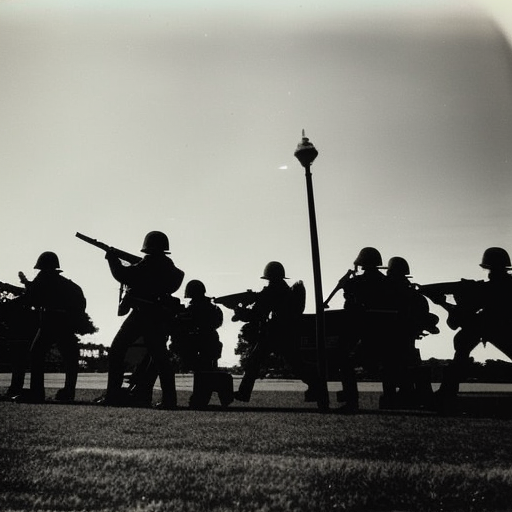Battle of Hampton Roads: The Clash of Ironclads
The Battle of Hampton Roads, also known as the Battle of the Monitor and Merrimack, was a historic naval engagement that took place during the American Civil War on March 8-9, 1862. It marked the first meeting in combat of ironclad warships, forever changing the course of naval warfare.
Background: At the outbreak of the Civil War, the Union Navy sought to blockade Confederate ports to cut off their vital supply lines. The Confederates, aware of their naval inferiority, decided to convert the scuttled USS Merrimack into an ironclad warship, which they renamed the CSS Virginia. Meanwhile, the Union Navy commissioned the USS Monitor, an innovative ironclad vessel designed by Swedish engineer John Ericsson.
The Clash of Ironclads:
On March 8, 1862, the CSS Virginia, under the command of Captain Franklin Buchanan, steamed into Hampton Roads, Virginia, with the intention of breaking the Union blockade. The Virginia was a formidable vessel, with an iron-plated casemate and a powerful battery of ten guns.
Upon seeing the Confederate ironclad, panic spread among the Union ships in the area. However, the USS Monitor, commanded by Lieutenant John Worden, arrived just in time to confront the Virginia. The Monitor was a radical departure from traditional warships, featuring a revolving turret housing two powerful cannons.
The two ironclads engaged in a fierce battle that lasted for several hours. The Monitor’s low profile and revolving turret allowed it to maneuver more effectively than the Virginia. The Union vessel’s heavy armor also proved effective in deflecting the Confederate ship’s gunfire.
Despite the intense fighting, neither ironclad was able to inflict significant damage on the other. The Monitor’s shots often glanced off the Virginia’s sloping iron armor, while the Virginia’s cannonballs failed to penetrate the Monitor’s turret. The battle ended inconclusively, with both ships withdrawing to their respective bases.
Impact and Significance:
The Battle of Hampton Roads had a profound impact on naval warfare. It demonstrated the effectiveness of ironclad warships and rendered wooden warships obsolete. The engagement also highlighted the importance of armor and firepower in naval battles, leading to a global arms race to build ironclads.
The battle’s inconclusive outcome had strategic implications as well. The Union blockade remained intact, preventing the Confederacy from receiving crucial supplies. The CSS Virginia was eventually scuttled by the Confederates to prevent its capture, while the USS Monitor continued to serve in the Union Navy until it sank in a storm later that year.
The Battle of Hampton Roads also had a psychological impact on both sides. The Union Navy, initially demoralized by the Virginia’s appearance, gained confidence from the Monitor’s performance. The Confederates, on the other hand, were disheartened by their inability to break the blockade.
Legacy:
The Battle of Hampton Roads marked a turning point in naval warfare. It ushered in the era of ironclads, which would dominate naval battles for the next several decades. The engagement also influenced the design of future warships, with revolving turrets and armored casemates becoming standard features.
Furthermore, the battle highlighted the importance of technological innovation in warfare. The Monitor and Virginia represented the cutting-edge of naval technology at the time, and their clash demonstrated the need for continuous advancements in weaponry and shipbuilding.
In conclusion, the Battle of Hampton Roads was a pivotal moment in naval history. The clash between the ironclads Monitor and Virginia forever changed the nature of naval warfare, rendering wooden warships obsolete and ushering in a new era of armored vessels. The battle’s inconclusive outcome had strategic and psychological implications, while its legacy influenced the design of future warships and emphasized the importance of technological innovation in warfare.












